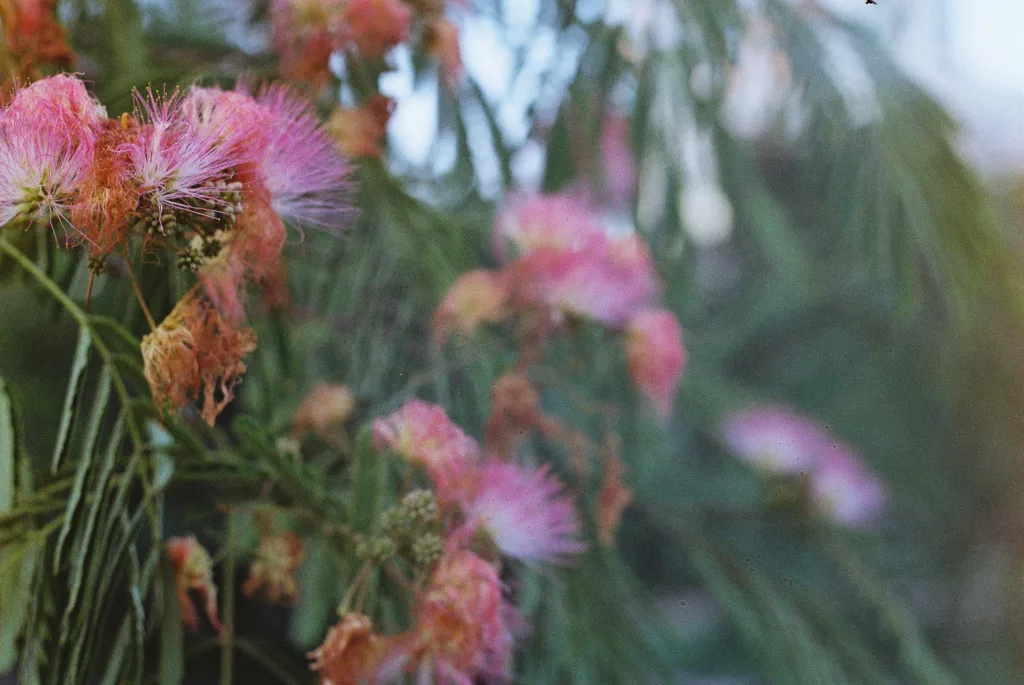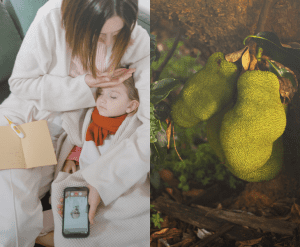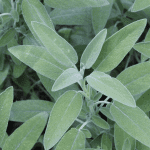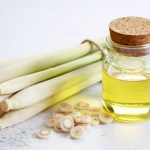Nature, with its vast array of flora and fauna, never ceases to amaze us with its healing powers. Among the many marvels of the plant kingdom, the Mimosa tree stands out for its enchanting beauty and an impressive range of medicinal uses.
This blog post will delve into the origins of the Mimosa tree and explore its remarkable healing properties that have been revered for centuries.
Origin and Distribution:
The Mimosa tree, scientifically known as Albizia julibrissin, is native to the Middle East and Asia. It derives its name from the Greek word “mimos,” meaning “mimic,” as its leaves respond to touch, folding and drooping like the movement of a hand. The tree has a rich history that dates back to ancient times when it was cultivated for its ornamental beauty and valued for its medicinal properties.
Over the centuries, the Mimosa tree has traveled across the globe, adapting to various climates and becoming naturalized in many regions. Today, it can be found in parts of Europe, North and South America, and Africa, thriving in warm temperate and subtropical environments. Its ability to flourish in diverse ecosystems has made it accessible to different cultures, enabling them to explore its therapeutic potential.
Medicinal Uses of Mimosa Tree
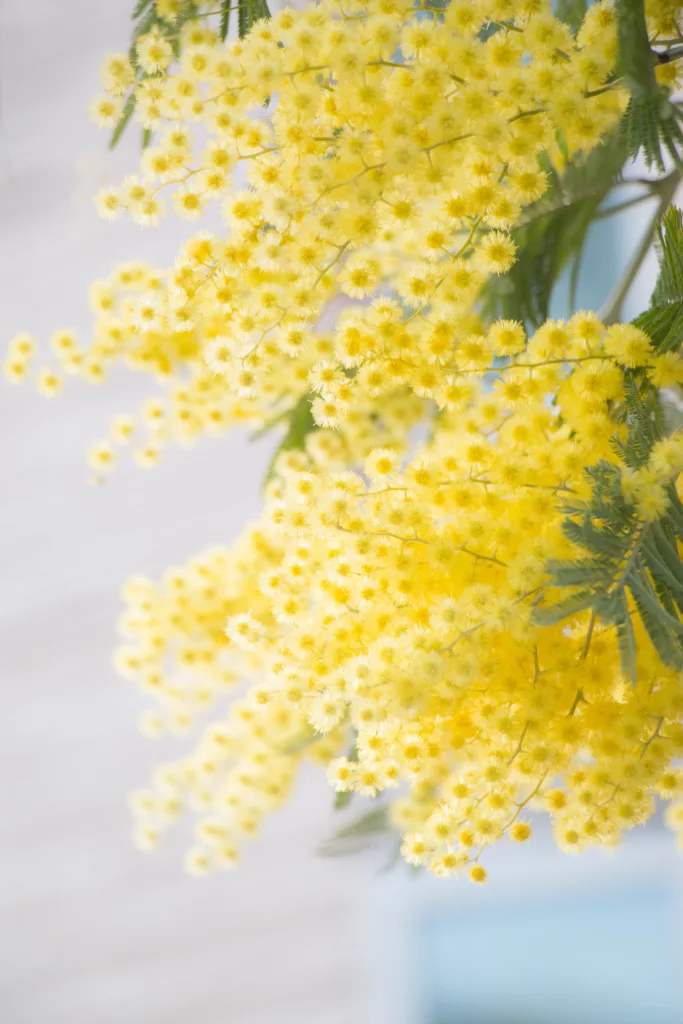
1. Anxiety and Stress Relief
Mimosa tree bark and flowers have been traditionally used in herbal medicine to alleviate anxiety and stress-related symptoms. The tree contains compounds such as alkaloids, flavonoids, and saponins that have sedative properties, helping to calm the mind and promote relaxation.
2. Mood Enhancement
The Mimosa tree is renowned for its mood-enhancing effects. The leaves and flowers are often prepared as infusions or tinctures, believed to uplift the spirit and improve overall well-being. These preparations may help combat feelings of sadness, melancholy, and promote a sense of positivity.
3. Sleep Aid
In certain traditional practices, the Mimosa tree has been utilized as a natural remedy for insomnia. Its calming properties can help soothe the nervous system, facilitating a more restful sleep and promoting a refreshed awakening.
4. Anti-inflammatory and Antioxidant Properties
The bark and leaves of the Mimosa tree contain compounds with anti-inflammatory and antioxidant properties. These attributes may contribute to reducing inflammation in the body and combating oxidative stress, which is associated with various chronic diseases.
5. Skin Health
Mimosa tree extracts have also found their way into skincare products. The tree’s components have moisturizing and rejuvenating properties, promoting healthy skin and aiding in the healing of minor wounds and skin irritations.
It is important to note that while the Mimosa tree has been used in traditional medicine for generations, scientific research is ongoing to validate and better understand its medicinal properties.
How to Use Mimosa Tress For It’s Medicinal Uses
When it comes to applying the Mimosa tree for its medicinal uses, there are a few different methods depending on the specific purpose. Here are some common ways to apply Mimosa tree extracts:

1. Herbal Infusion or Tea:
One of the simplest and most popular methods is to prepare a herbal infusion or tea using the Mimosa tree leaves or flowers. Here’s how you can do it:
- Boil a cup of water.
- Add a teaspoon of dried Mimosa tree leaves or flowers to the boiling water.
- Let it steep for about 10-15 minutes.
- Strain the mixture and drink the resulting tea.
- You can consume this tea 1-2 times a day, depending on your needs.
2. Tinctures and Extracts:
Tinctures and liquid extracts are concentrated forms of the Mimosa tree, making them convenient for long-term use. These can be found in health food stores or prepared at home using alcohol or glycerin as a solvent. Follow the instructions on the product or consult a herbalist for appropriate dosing and usage instructions.
3. Topical Applications:
For skin-related issues or wound healing, you can use Mimosa tree extracts topically. This can be in the form of creams, ointments, or diluted essential oils. Ensure that you are using high-quality, organic products or consult a qualified aromatherapist or herbalist for guidance on usage and dilution ratios.
4. Capsules and Tablets:
Some Mimosa tree extracts are available in capsule or tablet form. These are often standardized extracts and should be taken according to the recommended dosage instructions on the packaging. It is advisable to consult a healthcare professional before taking any oral supplements.
5. Essential Oil:
Mimosa tree essential oil, derived from the flowers or bark, can be used for aromatherapy purposes. It can be diffused in a room or diluted in carrier oils for massage or skincare. Remember to perform a patch test before applying essential oils to the skin and consult an expert for appropriate dilution ratios.
Always keep in mind that herbal remedies and their applications can vary, and it is crucial to seek guidance from healthcare professionals, herbalists, or aromatherapists to ensure safe and effective use. Additionally, if you have any underlying health conditions or are taking medications, it is essential to consult your healthcare provider before using any new herbal remedies, including those derived from the Mimosa tree.
Conclusion
The Mimosa tree, with its captivating beauty and remarkable healing potential, has a long-standing history of traditional use in various cultures. From its origins in the Middle East and Asia to its naturalization in different parts of the world, this tree has captured the attention of herbalists and plant enthusiasts alike.
With its applications ranging from stress relief and mood enhancement to anti-inflammatory and antioxidant effects, the Mimosa tree continues to intrigue scientists who seek to uncover its secrets.
While the Mimosa tree holds great promise as a medicinal plant, it is always advisable to consult with healthcare professionals and herbalists before incorporating any herbal remedies into your healthcare routine. As our understanding of this miraculous tree deepens, we may discover even more therapeutic uses that can benefit humanity’s quest for well-being and vitality.
Disclaimer: This is for informational purposes only.
Always keep in mind that herbal remedies and their applications can vary, and it is crucial to seek guidance from healthcare professionals, herbalists, or aromatherapists to ensure safe and effective use. Additionally, if you have any underlying health conditions or are taking medications, it is essential to consult your healthcare provider before using any new herbal remedies, including those derived from the Mimosa tree.
Did you find this helpful? Let us know in the comments.
You can also visit our Facebook and YouTube pages to know more about plants and their health benefits.
You might also like:
- Reasons Why Drink Matcha: Matcha’s Health Benefits & Its Nutritional Value
- Vegetables With Highest Source of Omega-3: Omega-3 Rich Vegetables
- Safflower vs. Saffron: Compare Its Health Benefits, and Nutritional Value

